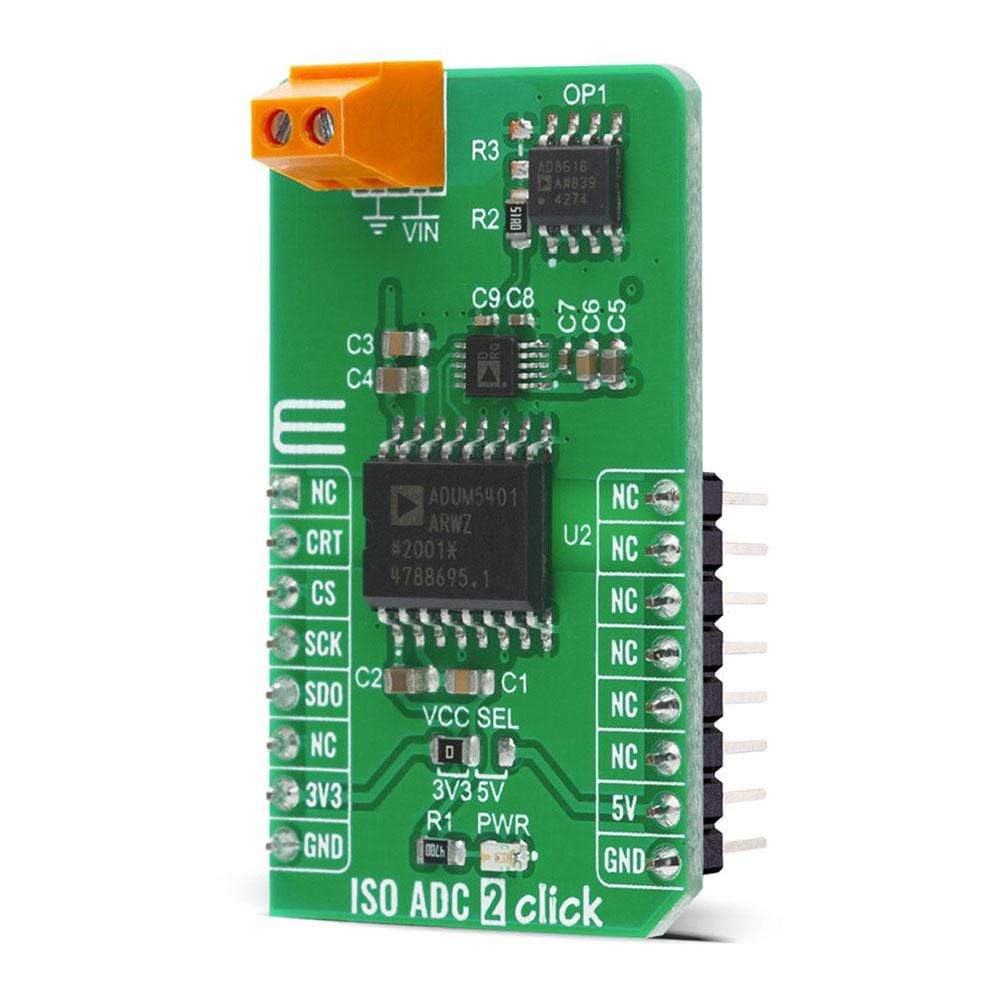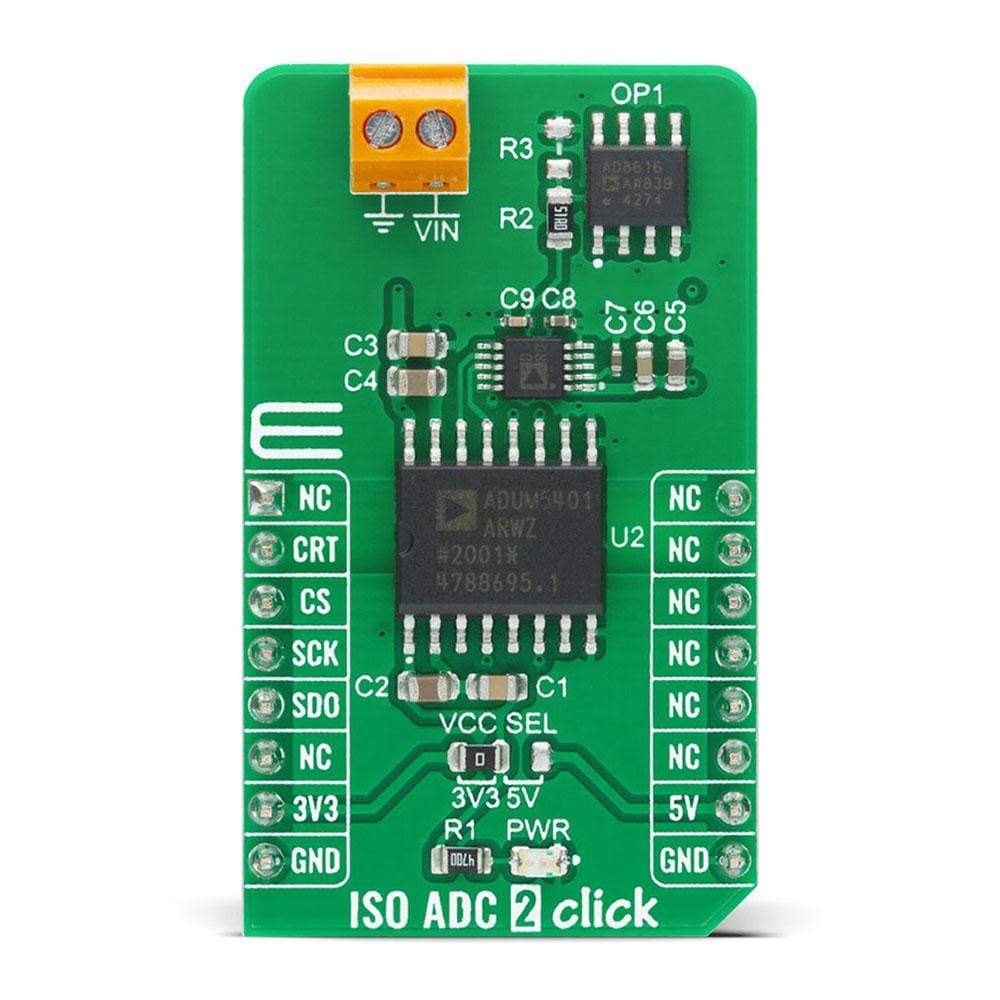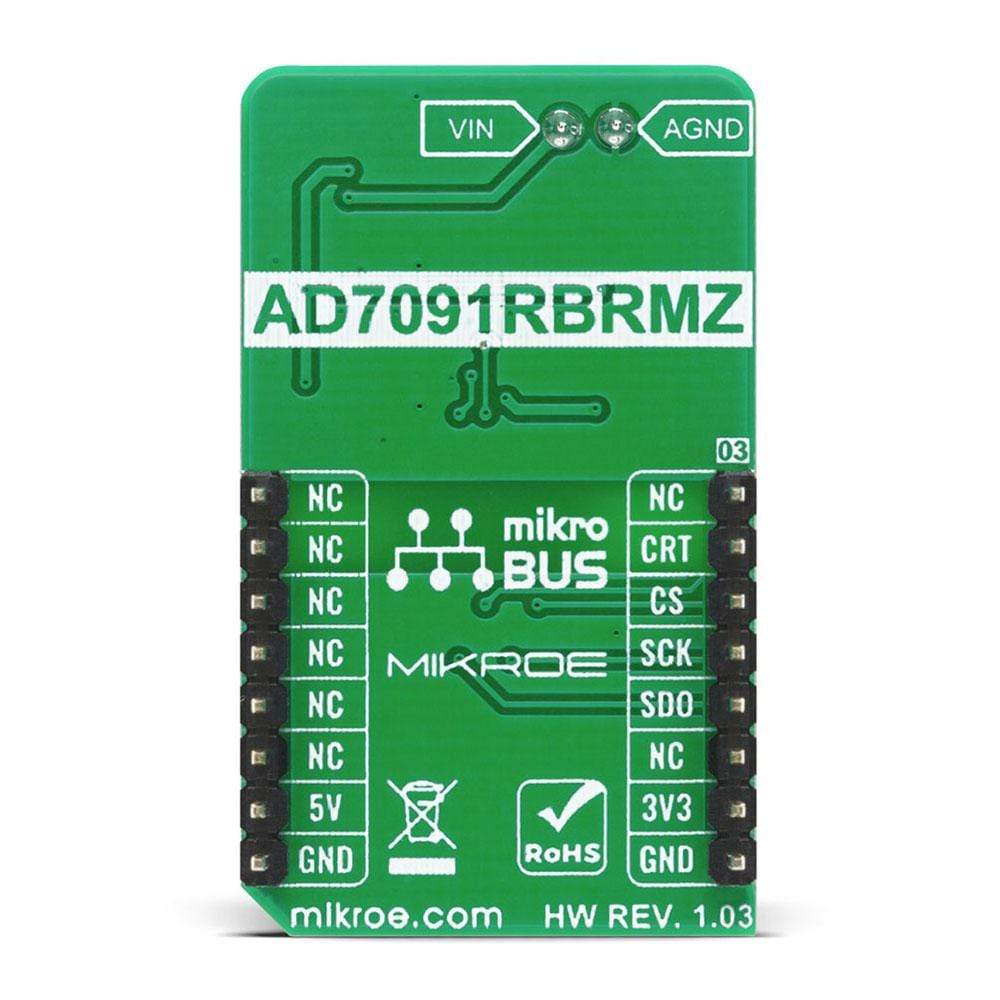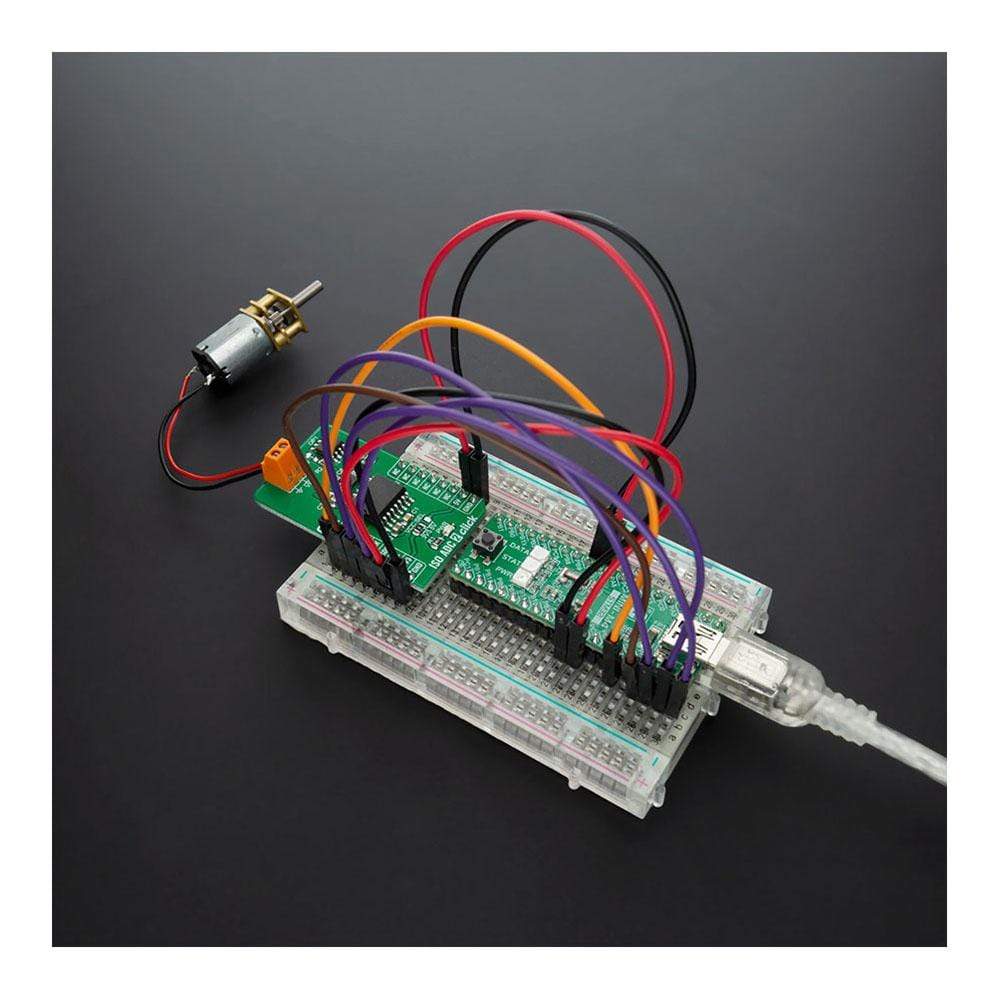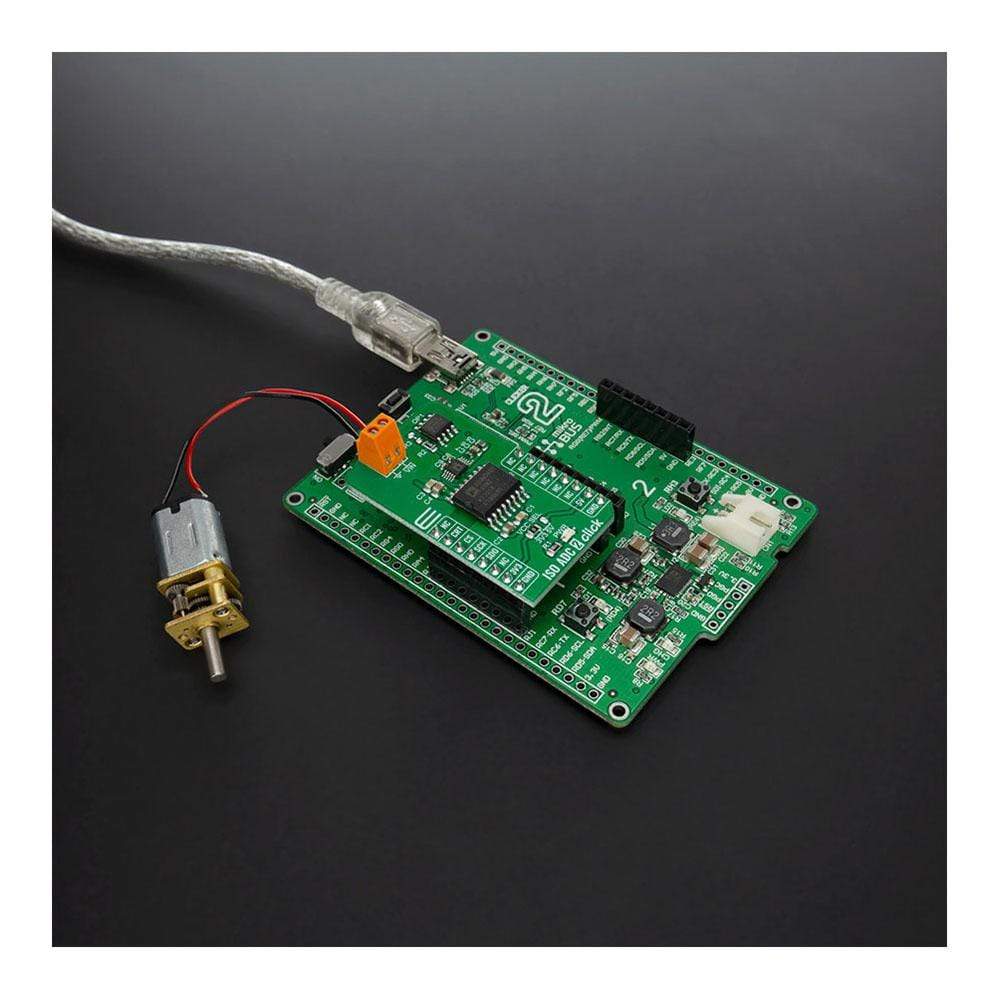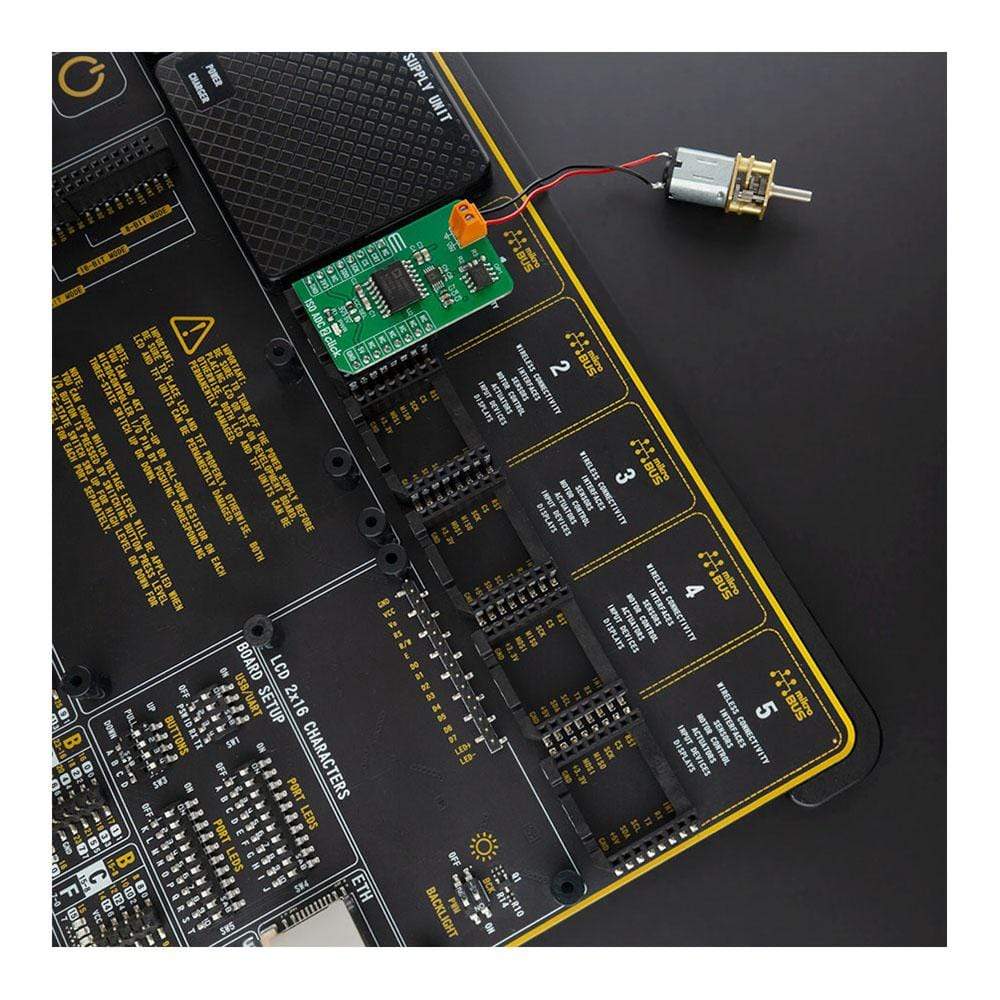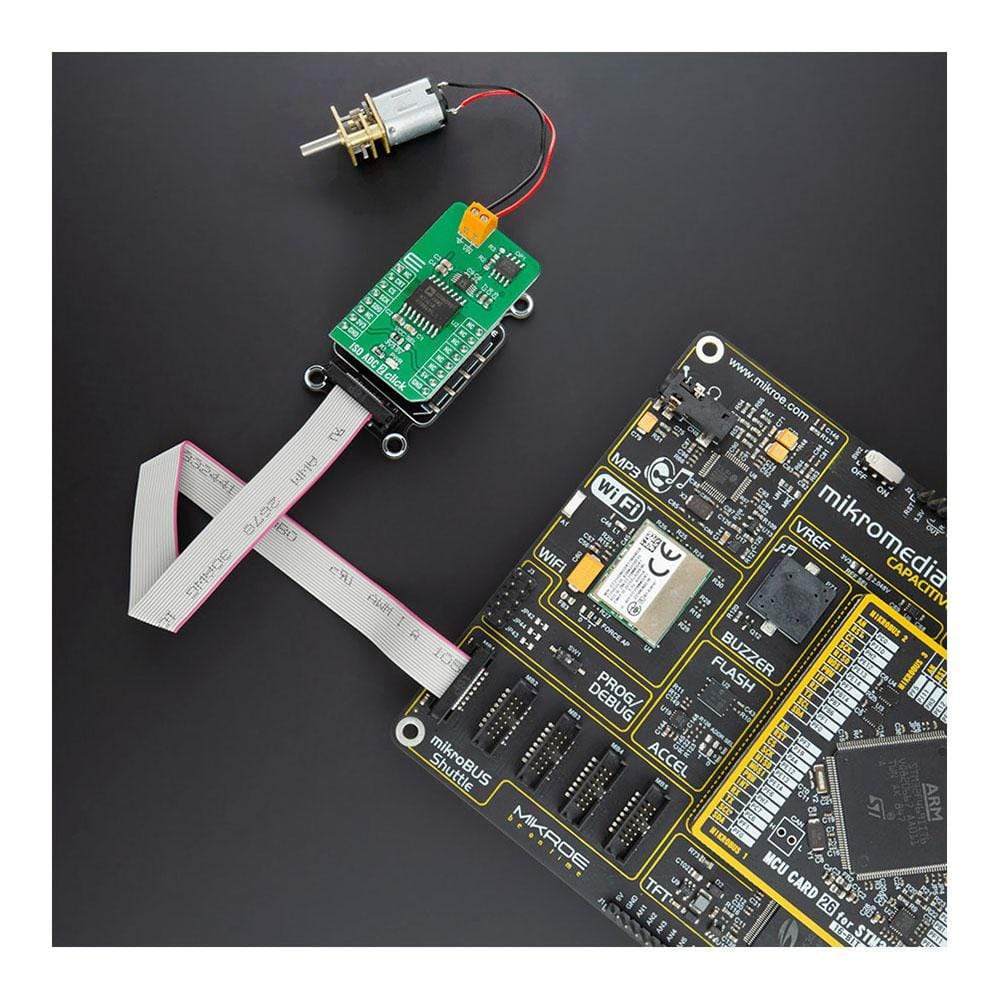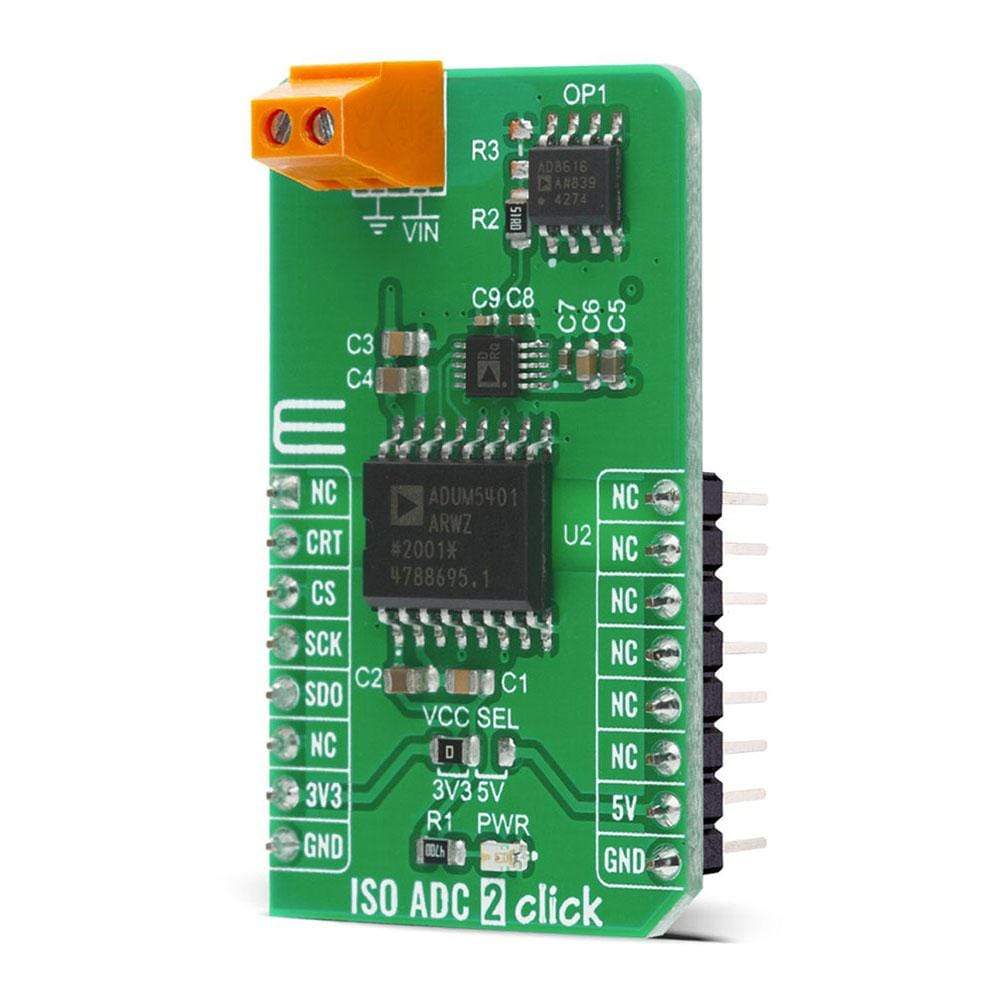
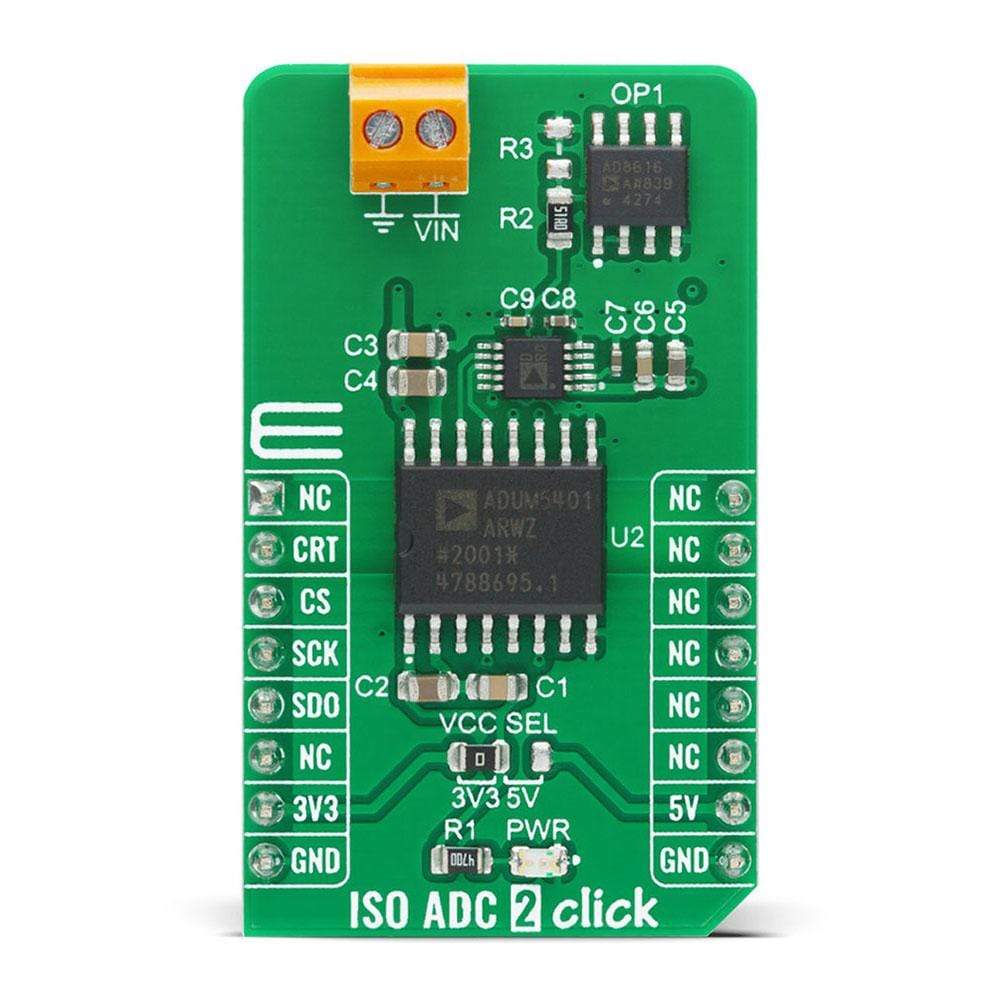
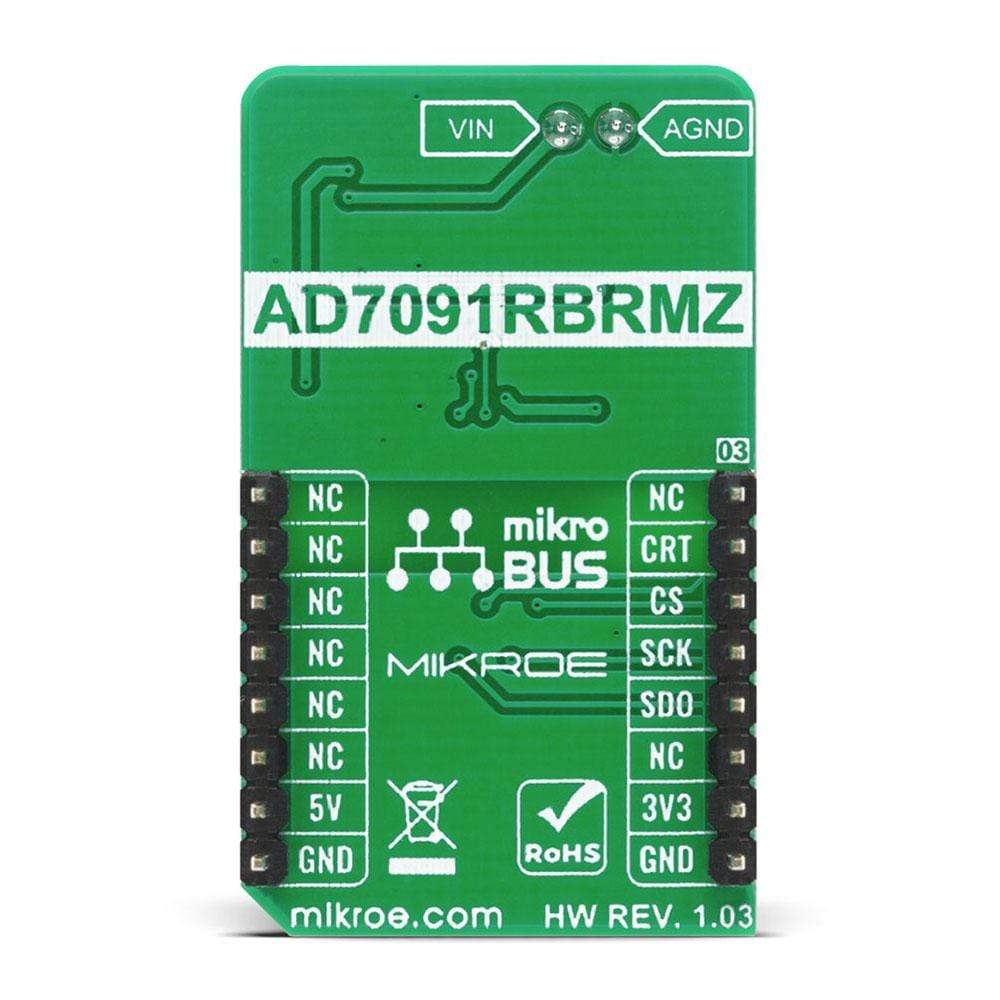
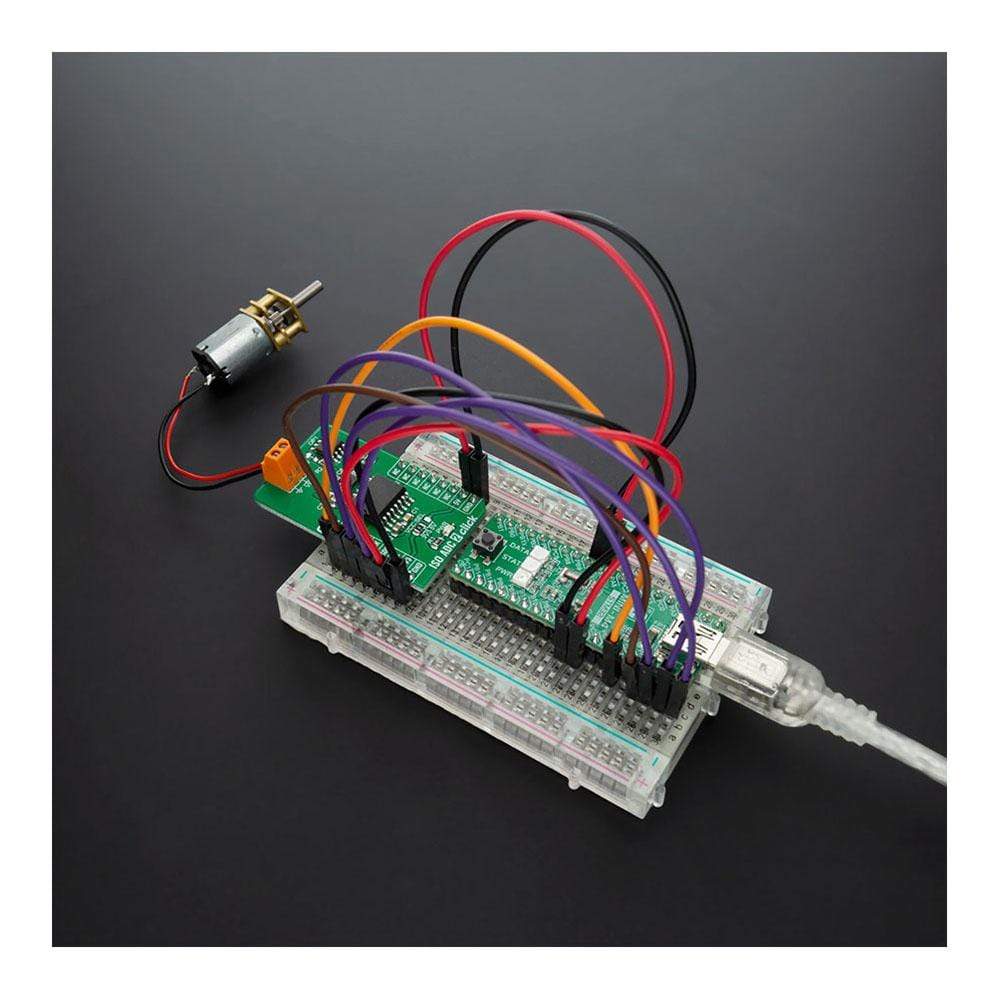
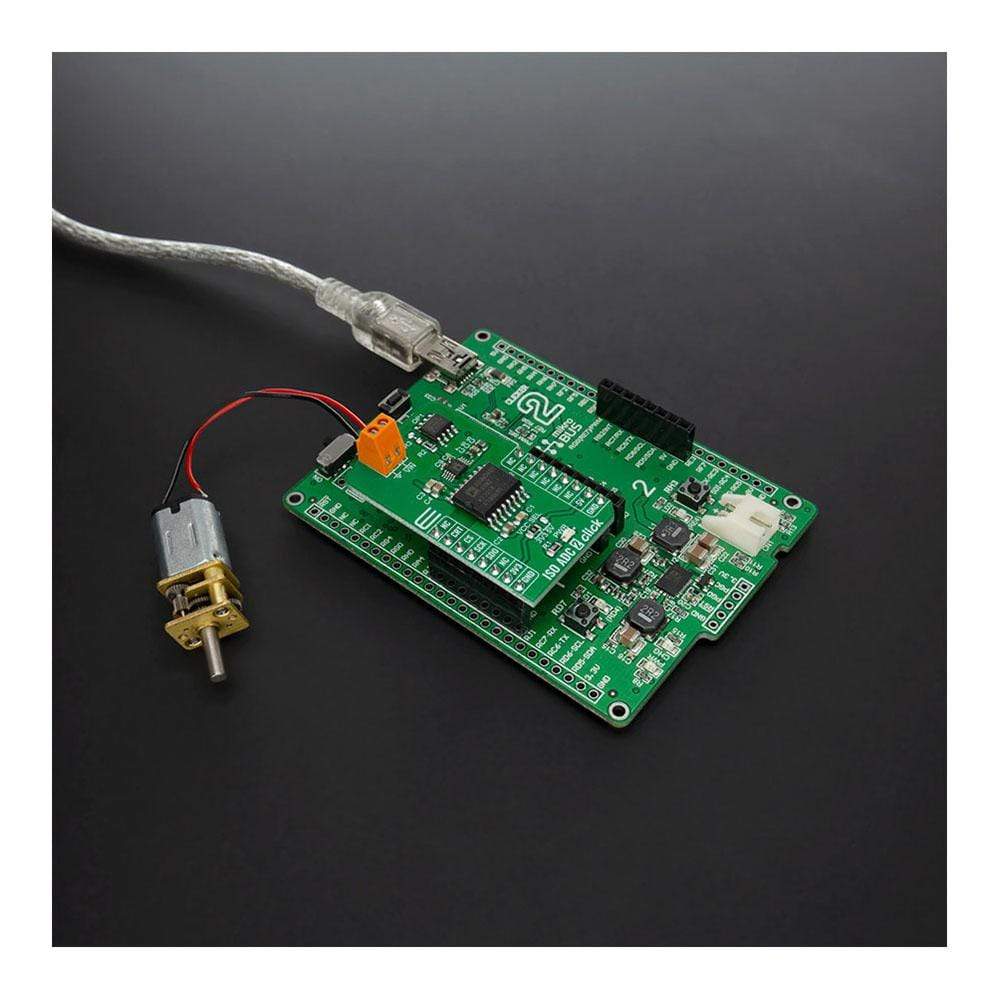
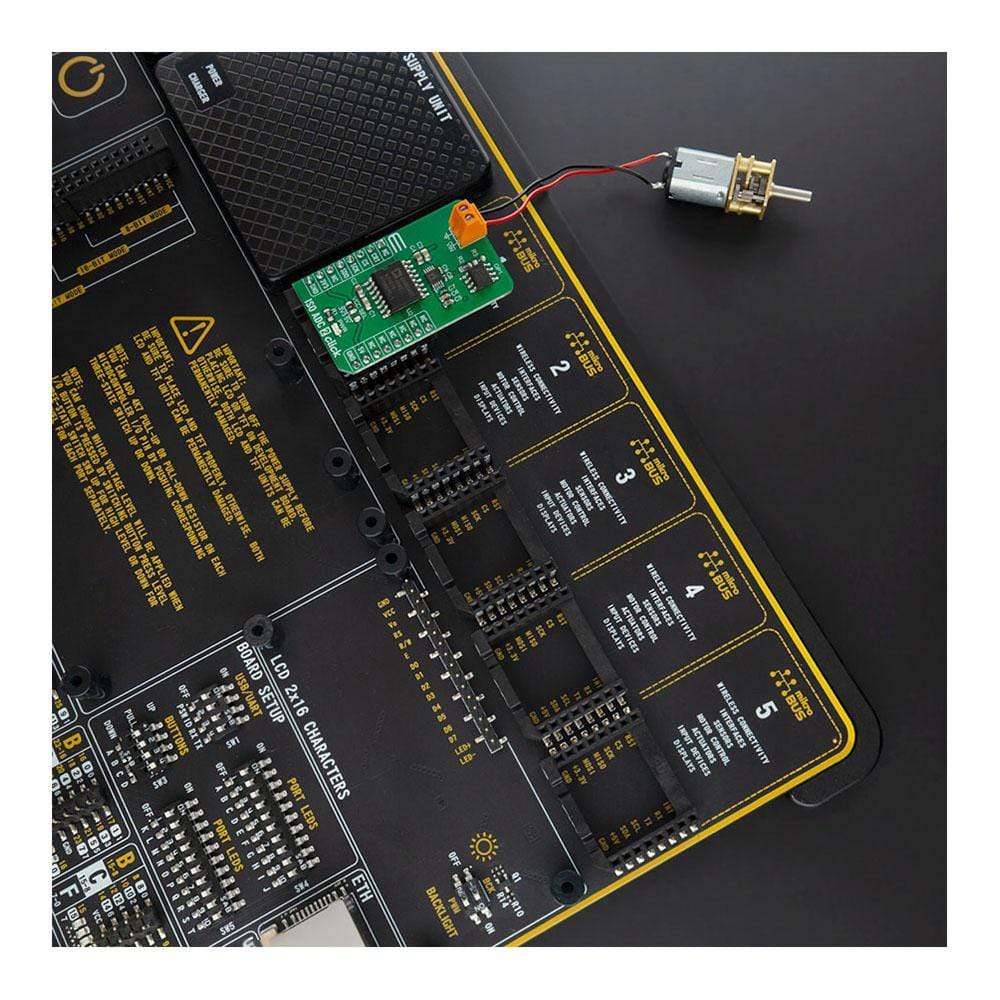
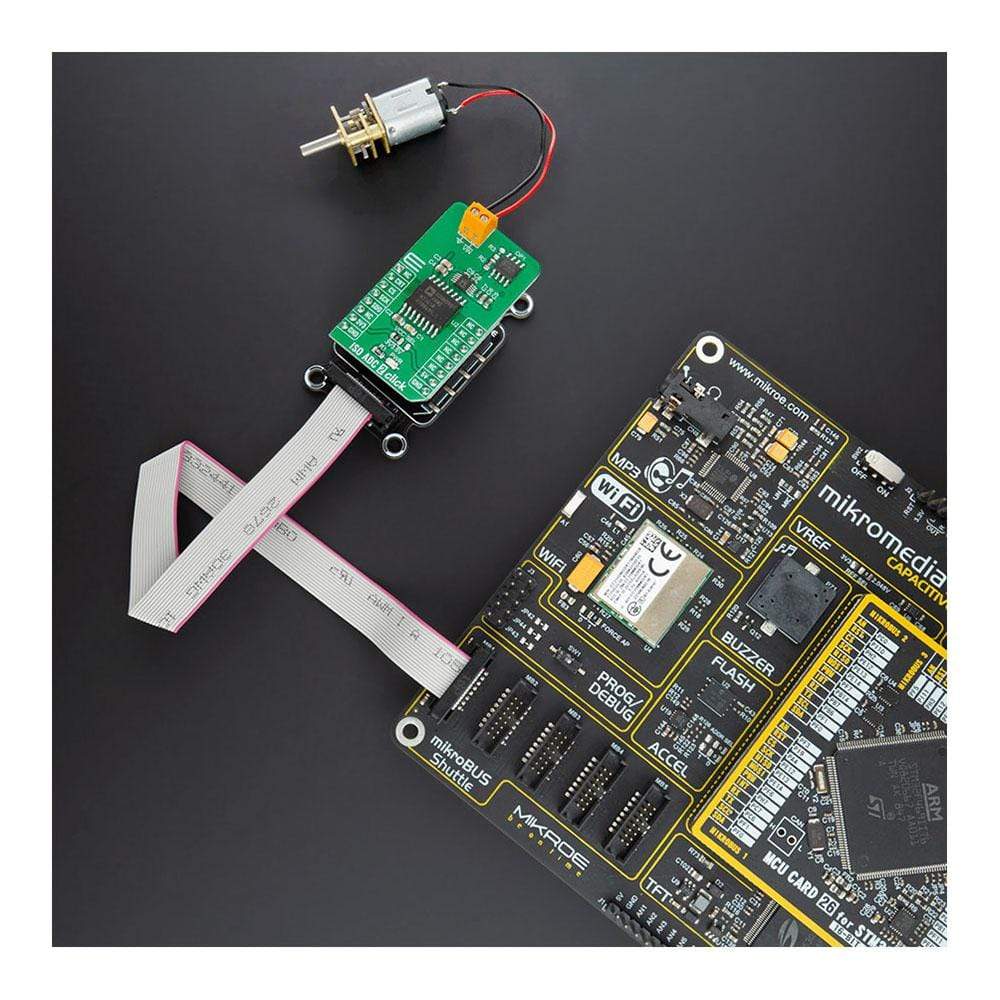
Overview
The ISO ADC 2 Click Board™ is a compact add-on board that represents a completely isolated 12-bit, 300 kSPS data acquisition system. This board features the AD7091R, a successive-approximation analog-to-digital converter (ADC) from Analog Devices. It uses the 3-wire SPI serial interface for data communication, achieving up to 1 MSPS throughput rate. This Click Board™ also features the ADU 4-Channel Isolator with DC-DC Converter M5401, isolated DC-DC converter used to isolate the logic signals, power, and feedback paths in the DC-DC converter resulting in total isolation solution. Many features such as high throughput rate with ultralow power consumption, wide input bandwidth, accuracy, and speed make it an ideal choice for a wide variety of industrial measurements, data acquisition systems, monitoring functions, and many more.
The ISO ADC 2 Click Board™ is supported by a mikroSDK compliant library, which includes functions that simplify software development. This Click Board™ comes as a fully tested product, ready to be used on a system equipped with the mikroBUS™ socket.
Downloads
La carte Click Board™ I SO ADC 2 est une carte complémentaire compacte qui représente un système d'acquisition de données 12 bits, 300 kSPS complètement isolé. Cette carte est équipée de l'AD7091R, un convertisseur analogique-numérique (ADC) à approximations successives d'Analog Devices. Il utilise l'interface série SPI à 3 fils pour la communication de données, atteignant un débit allant jusqu'à 1 MSPS. Cette carte Click Board™ est également équipée de l'isolateur à 4 canaux ADU avec convertisseur CC-CC M5401, un convertisseur CC-CC isolé utilisé pour isoler les signaux logiques, l'alimentation et les chemins de rétroaction dans le convertisseur CC-CC, ce qui donne lieu à une solution d'isolation totale. De nombreuses fonctionnalités telles qu'un débit élevé avec une consommation d'énergie ultra-faible, une large bande passante d'entrée, la précision et la vitesse en font un choix idéal pour une grande variété de mesures industrielles, de systèmes d'acquisition de données, de fonctions de surveillance et bien d'autres.
La carte Click Board™ ISO ADC 2 est prise en charge par une bibliothèque compatible mikroSDK, qui comprend des fonctions qui simplifient le développement logiciel. Cette carte Click Board™ est un produit entièrement testé, prêt à être utilisé sur un système équipé du socket mikroBUS™.
| General Information | |
|---|---|
Part Number (SKU) |
MIKROE-4166
|
Manufacturer |
|
| Physical and Mechanical | |
Weight |
0.019 kg
|
| Other | |
Country of Origin |
|
HS Code Customs Tariff code
|
|
EAN |
8606027380266
|
Warranty |
|
Frequently Asked Questions
Have a Question?
Be the first to ask a question about this.

